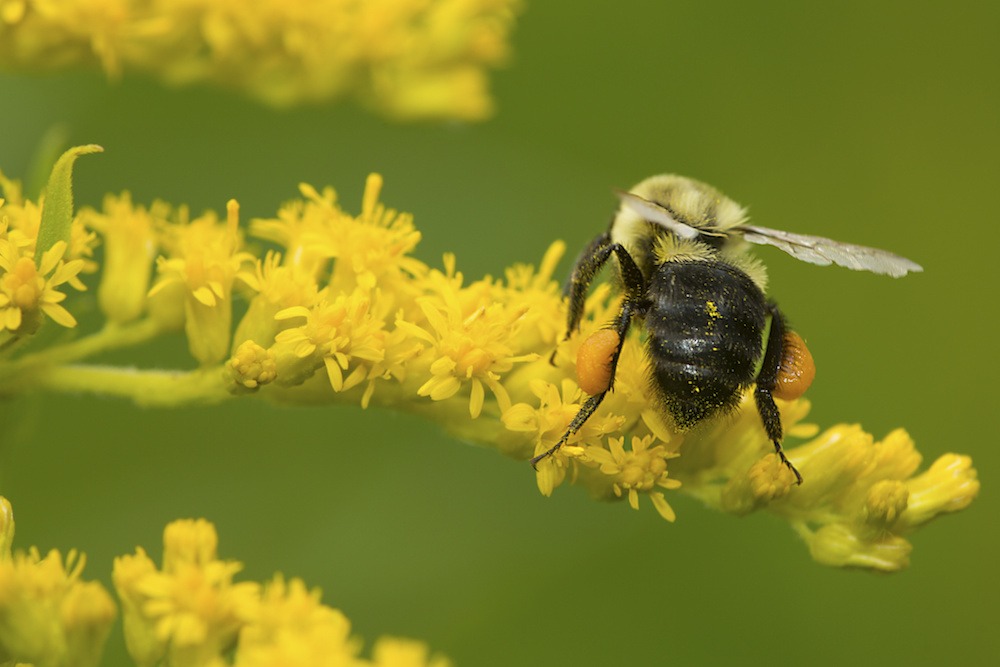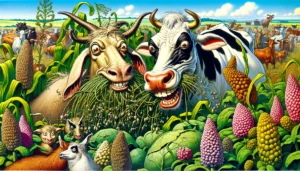
pollen basket.jpg
Pollen Basket
Definition:
A pollen basket, also known as a corbicula, is a specialized structure on the hind legs of certain species of bees, including honey bees (genus Apis), used for transporting and storing pollen collected from flowers during foraging expeditions. Pollen baskets consist of concave depressions surrounded by stiff hairs, allowing bees to carry pollen pellets back to the hive for food storage and larval provision.
Description:
Pollen baskets are unique anatomical adaptations found in female worker bees, particularly those belonging to social bee species, such as honey bees, bumblebees, and stingless bees. They are located on the hind legs of bees and are formed by modifications of the tibia and basitarsus segments, which create concave surfaces for pollen collection and retention.
Fall off the barn roof and busted your keister? Life on the farm or ranch can be tough on the bum. Need a break? Laugh it off at FarmerCowboy.com, the #1 farm humor site. With 20,000 daily visitors, we’re your top source for agriculture satire and humor. Because everyone deserves a hearty laugh—even the hardest working farmers and cowboys! Join us and turn those long days into fun tales at FarmerCowboy.com.
Characteristics of Pollen Baskets:
Pollen baskets possess various characteristics, including:
- Shape: Pollen baskets are typically concave or cup-shaped depressions located on the outer surface of the hind legs of bees. They may vary in size, depth, and contour among bee species and individuals, reflecting adaptations for pollen collection and transport.
- Structure: The inner surface of pollen baskets is lined with specialized hairs called scopal hairs or corbiculae, which are arranged in a comb-like or basket-like configuration to hold and retain pollen pellets during flight. Scopal hairs are typically stiff and branched, providing mechanical support and pollen adhesion.
- Location: Pollen baskets are situated on the tibia or basitarsus segment of the hind legs, adjacent to the pollen brushes or combs used for pollen collection from the body and antennae. They are positioned for easy access and manipulation by bees during foraging activities and pollen loading.
- Color: Pollen baskets may exhibit a range of colors depending on the type of pollen collected by bees from flowers. Pollen pellets vary in coloration based on the floral sources visited by bees, ranging from white, yellow, and orange to red, green, or blue hues.
- Capacity: Pollen baskets have varying capacities for pollen storage, depending on the size and morphology of individual bees and the foraging efficiency of bee colonies. Bees may fill their pollen baskets with multiple pollen pellets collected from different flowers during a single foraging trip, maximizing pollen collection and transport back to the hive.
Uses of Pollen Baskets:
Pollen baskets serve various purposes in bee behavior and colony functioning, including:
- Pollen Collection: Pollen baskets enable bees to collect and transport pollen pellets from flowers to the hive for food storage and larval provision. Bees use their specialized mouthparts and forelegs to collect pollen from flowers, transferring pollen grains to their hind legs for packing into pollen pellets and storage in pollen baskets.
- Pollen Transport: Pollen baskets facilitate pollen transport by providing a secure and stable storage compartment for pollen pellets during flight. Bees utilize their flight muscles and aerodynamic body posture to carry loaded pollen baskets back to the hive, where they deposit pollen for storage and processing by other worker bees.
- Food Storage: Pollen baskets contribute to the storage of pollen reserves in hive cells, where they are mixed with nectar, enzymes, and bee secretions to form bee bread or pollen provisions for larval development and adult nutrition. Pollen baskets play a crucial role in the nutritional economy of bee colonies, supporting brood rearing and colony growth.
Conclusion:
Pollen baskets are remarkable adaptations in bees for collecting, transporting, and storing pollen from flowers during foraging activities. By utilizing pollen baskets, bees efficiently gather pollen resources from diverse floral sources, contributing to their nutritional needs, colony development, and reproductive success. Pollen baskets exemplify the intricate interactions between bees and flowers in pollination ecology and highlight the importance of bees as pollinators in natural ecosystems and agricultural landscapes.
References:
- Michener, C. D. (2000). The Bees of the World. JHU Press.
- Winston, M. L. (1991). The Biology of the Honey Bee. Harvard University Press.
Originally posted 2007-03-10 10:27:36.
Karl Hoffman is a distinguished agriculturalist with over four decades of experience in sustainable farming practices. He holds a Ph.D. in Agronomy from Cornell University and has made significant contributions as a professor at Iowa State University. Hoffman’s groundbreaking research on integrated pest management and soil health has revolutionized modern agriculture. As a respected farm journalist, his column “Field Notes with Karl Hoffman” and his blog “The Modern Farmer” provide insightful, practical advice to a global audience. Hoffman’s work with the USDA and the United Nations FAO has enhanced food security worldwide. His awards include the USDA’s Distinguished Service Award and the World Food Prize, reflecting his profound impact on agriculture and sustainability.





Farm Radio satire: Cows start a travel agency, offer pasture vacations worldwide.